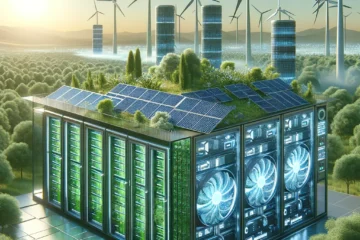In the age of technology, where our lives have been deeply intertwined with digital strings, a powerful tool emerges that may hold the key to a sustainable future – Artificial Intelligence (AI). In the wake of escalating climate change threats, harnessing AI’s potential can catalyze our green evolution and equip us with the tools we need to navigate this existential crisis.
Understanding Climate Change
Climate change is a complex issue, the understanding of which requires vast amounts of data. Our planet’s climate system is influenced by numerous interconnected factors like greenhouse gas emissions, solar radiation, oceanic currents, and more. This intricate network of influences can be hard to decipher, but this is where AI steps in, providing an opportunity to make sense of these vast datasets.
AI can help scientists and researchers to predict climatic changes more accurately by processing and analyzing complex climate data. Machine learning algorithms can recognize patterns and trends in historical climate data, enabling them to make reliable predictions about future conditions.
AI and Climate Predictions
An application of AI that is gaining prominence in the field of climate science is climate modeling. Complex computational models, trained on vast amounts of historical climate data, can simulate potential future climate scenarios. These predictive models can help us understand the impacts of various human activities on our environment, enabling us to make informed decisions.
For example, AI algorithms have been used to predict the melting of polar ice caps and rising sea levels. These predictions are not only alarming, but they also inform policymakers and stakeholders about the urgency of taking decisive action.
AI in Mitigating Climate Change
AI’s role is not limited to climate prediction; it also extends to mitigating climate change effects. AI technologies can be leveraged to optimize energy consumption and increase energy efficiency in various sectors. AI systems can predict energy demand, manage supply and distribution more effectively, and can even suggest improvements in manufacturing processes to reduce carbon footprints.
In the renewable energy sector, AI can help optimize the operation of wind turbines and solar panels, increasing their efficiency and reducing costs. Predictive maintenance, enabled by AI, can detect potential issues before they cause failures, enhancing the longevity and performance of these systems.
Moreover, AI is at the forefront of smart city initiatives, fostering green living by optimizing traffic flow, reducing congestion, and facilitating efficient public transportation.
AI and Carbon Capture
One of the promising developments in AI technology is its application in carbon capture and storage (CCS). AI can optimize the process of capturing carbon dioxide emissions from large point sources, such as fossil fuel power plants, and storing it so it doesn’t enter the atmosphere. By improving the efficiency and cost-effectiveness of CCS, AI could make this technology a more viable option for reducing greenhouse gas emissions.
Conclusion
In our fight against climate change, AI appears as a promising ally. Its predictive capabilities and potential in combating climate change effects offer a beacon of hope. But, as we wield this double-edged sword, it’s also critical to consider the energy consumption of AI systems and strive to make them more efficient and less carbon-intensive.
While we’re still at the early stages of fully integrating AI into our climate change strategy, the potential it holds is immense. By leveraging AI, we can chart a more sustainable, green path for our planet.




